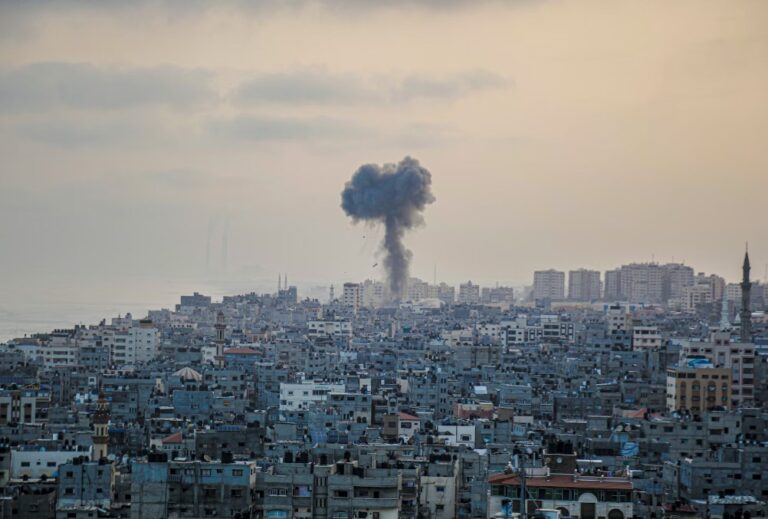The year that just passed has been marked by two wars: the Russian-Ukrainian one which continues and the one that began over two months ago between Israel and Hamas. Two conflicts that have polarized international attention and public opinion for which, despite efforts, a diplomatic solution cannot be found. But many others are the conflicts around the world that risk worsening throughout 2024.
Table of Contents
The Russia-Ukraine war
The Ukrainian counteroffensive has failed to turn the tide of the conflict that began two years ago and – according to some analysts – in these long months it has represented the highest risk of nuclear conflict in the last 60 years.
Unconfirmed sources speak of at least 190 thousand Ukrainian soldiers who were victims of two years of war. One in 3 Ukrainians has been forced to flee their country. And even for the Russian military, the Kremlin does not provide certain data. According to the New York Times, at least 120 thousand remained on the ground.
The Israel-Hamas war
In 2023 we saw these consequences occur all together in a few square kilometers. The war in the Gaza Strip was the one that took everyone by surprise, not only for its dramatic intensity. But also for its unprecedented atrocities.
20,000 Palestinian victims in just over 70 days of conflict and 1,200 Jews massacred on 7 October at the hands of Hamas (dozens of victims including 240 Jews taken hostage) and hundreds of women subjected to violent rapes. Not a novelty in the use of what is defined as a real weapon of war.
The UN denounces an unprecedented humanitarian crisis with a quarter of the population dying of hunger. And 1.9 million displaced people who have nowhere to go.
Civil war in Sudan
But if we look at civil wars, there is one that is even more disastrous. Sudan is the theater of widespread atrocities and war crimes. In Sudan, eight months of fighting between the national army and paramilitary Rapid Support forces have left more than 50 percent of the nation in need of humanitarian aid and forced around 6 million people to flee their homes.
Around 19 million children are without education, as the conflict has caused the closure of thousands of schools. “Sudan has become the world’s largest displacement crisis. The ability to provide aid is hampered by a lack of access and humanitarian funding,” the IRC writes. The ethnic, tribal and regional polarization of the current war is further threatening already limited access to aid.
The specter of wars due to climate change
The 10 nations on the International Committee of the Red Cross’ watchlist represent 86% of all people in need of humanitarian aid globally. Behind the political instability consuming these societies lies the specter of a warming planet, as droughts and other climate shocks strike some of the world’s most vulnerable communities. Three decades ago, 44% of conflicts occurred in climate-vulnerable states, while now that figure is 67%.
According to agreeing sources, there are already 300 micro-conflicts taking place around the world for the possession or control of water, the blue gold. A more significant example is the Renaissance dam in Ethiopia, which manages the flow of the waters of the (White) Nile which not only crosses and supplies Sudan. But affects the flow of water into Egypt.
Several ongoing conflicts in Africa
Beyond the polarization of “Western” wars, Africa is the continent that hosts the majority of potential hot spots, starting with the three nations of the so-called “coup belt”. I.e. those led by military juntas: Burkina Faso, Mali and Niger. 2023 was marked by over 40 million displaced people and refugees. A figure that does not appear likely to decrease in 2024.
Two other countries to keep a particular eye on will be Somalia, where the jihadist insurgents of Al-Shabaab continue to operate, with the aim of creating an Islamic-fundamentalist state in the Horn of Africa.
Ethiopia is also very worrying, far from the spotlight, already the scene of a long conflict with neighboring Eritrea, of an internal civil war with the Tigray region since 2020 and of a conflict in Oromia which has left over 600,000 civilians dead.
The other particularly hot areas of the continent are the Central African Republic, the east of the Democratic Republic of Congo, in the heart of the Great Lakes. No less Nigeria and Cameroon, in the sights of Boko Haram extremists. And in the case of Cameroon of strong tensions between Anglophones and Francophones.
The conflict between China and Taiwan
In Asia, elections in Taiwan could be marked by new provocations from China. At a time when the Biden administration is trying to bring some stability to its relations with Beijing.
But the biggest fire could be in Myanmar. Where the ruling junta is recovering from an offensive launched by a coalition of rebel militias and seeing growing desertions among its ranks.
Incandescent scenarios in South America
In South America there are several incandescent scenarios. One in particular seems to contain the same problem linked to territorial sovereignty found in the two main “Western” wars. The territorial dispute over Guyana Esequiba, a region that makes up two-thirds of the state of Guyana, rich in oil and mineral resources.
A recent referendum held in Venezuela with a positive outcome claims sovereignty over that territory, at the center of a dispute that has lasted for almost 200 years. President Nicolas Maduro would like to annex the territory. While Guyana is opposed by Brazil, which borders both and has already increased its military along the borders, fearing a possible escalation and the start of an armed conflict.
Question mark over Colombia, always prey to drug cartels and a transit area for huge migratory flows towards the USA.
While Chile is looking for a new Constitution and Argentina to recover from a disastrous socio-economic crisis following the reign of the Peronists, has just elected the controversial populist and liberal president Javier Milei. Who, is imposing his plan of austerity, tears and blood, and is already strongly contested.
Another struggle in Europe: the Caucasus
Finally in the Caucasus after another conflict over the struggle for territory saw Armenia and Azerbaijan compete for the Nagorno-Karabakh region.
Baku retook the separatist enclave last September after three decades of conflict. Now the two countries have promised ”concrete measures” to normalize relations.
Thus reiterating their intention to ”sign a peace agreement”. And the release of 32 Armenian prisoners of war, in exchange for two Azerbaijani soldiers. For them, perhaps, 2024 could be a year of peace.












